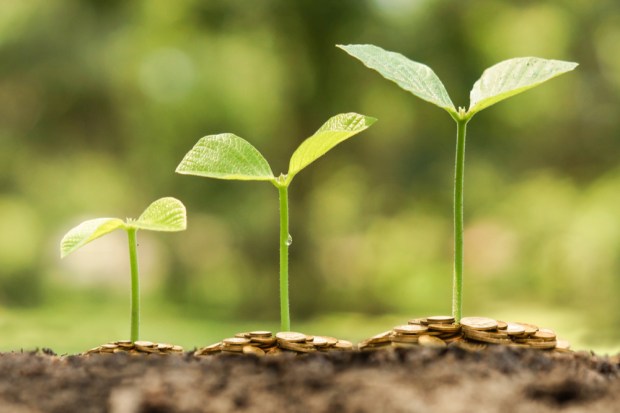‘Green Shoots’ Or Scorched Earth: What We’ve Learned From Banks And Payment Networks’ Latest Earnings Calls

Amid the coronavirus pandemic and recessions, the old saying in life might hold true in business, and in particular for firms that rely on consumer spending to drive top and bottom lines: Plan for the worst, hope for the best.
The sentiment has shown up repeatedly this earnings season, where companies across all verticals have withdrawn guidance, have cited lack of visibility in what comes next, and have girded for losses tied to souring loans.
And yet, there might be hints — glimmers, really — of recovery, at least in some of the data and qualitative remarks from executives on earnings calls.
In some cases, CEOs and chief financial officers have said that there have been indications of how recoveries might play out across certain verticals. They’ve taken the usual steps of giving a glimpse into trends into April (when the conference calls were held) to remark upon how consumer spending has trended.
The question is whether green shoots are emerging, or whether it’s far too early to pin hopes on a recovery. Might the green shoots give way to scorched earth?
The economic turbulence has thrown roughly 30 million Americans out of work as of this writing, and the ripple effect has been palpable.
Banks have already begun to reserve tens of billions of dollars for consumers and businesses that may not be able to pay back loans across credit card, auto, mortgages and other types of debt.
The overarching mindset is captured in JPMorgan CEO Jamie Dimon’s statement that there exists the “likelihood of a fairly severe recession.” JPMorgan took $6.9 billion in additional reserve builds, Citigroup took $4.9 billion, and Wells Fargo took roughly $4 billion. To get a sense of how banks are eyeing consumers’ prospects, consider the fact that JPMorgan’s set-aside for expected losses in that segment alone came to $4.4 billion.
Those reserves come even as the banks have extended relief over the last several weeks (and will continue to do so) through forbearance.
As noted by JPMorgan CFO Jennifer Piepszack, “we have already refunded millions of dollars in fees. We’ve approved payment relief for hundreds of thousands of accounts across consumer lending. And we obviously expect that to be meaningfully higher through time. We’ve paused foreclosures and auto repossessions.”
And during a question-and-answer session with analysts, she said that, in reference to credit card spending, in the aggregate, that activity was down 13 percent in the month of March, measured year over year.
“We’re seeing trends like that continue here in April,” she said.
The progression showed an initial decline in travel and entertainment, which then spread to restaurants and retail. The boost in spend categories, such as supermarkets and discount stores, has started to “normalize,” she said.
JPMorgan management said on the call that its reserve build assumes that gross domestic product (GDP) is down roughly 25 percent and that the unemployment rate rises over 10 percent. There also is the assumption of a solid recovery over the second half of the year.
And although it might seem that no one wants to put out concrete guidance, Mark Mason, CFO at Citigroup, stated that all expectations are that the “revenue trend in the latter part of March and the beginning of April characterized by COVID-related lower level of activity, particularly in banking, and our consumer franchise, will continue through much of the second quarter.”
The Green Shoots?
But as for the green shoots, Bank of America CEO Brian Moynihan took note of declines in card spending, after having been positive by mid- to high-single-digit percentages in January and February and a downshift in March.
“The overall spending, however, of all types of spending in our customers seems to have stabilized in the last few weeks,” he said. “During mid-April, we are seeing spending run at about a low $50 billion average level compared to $60 billion average level before the crisis. That’s per week spending.”
As for just how entrenched those spending levels might be moving forward, said the CEO: “We will see how that plays out through this quarter, and that stability may provide insight to the level of the economy activity in the shutdown status.”
What’s In The Cards?
The card networks showed granular detail into spending habits into late April that might give the nod as to which verticals may see light at the end of the tunnel, and which ones likely will remain hobbled by the impacts of the coronavirus.
As Vasant Prabhu, CFO at Visa, stated during the most recent earnings call, focusing on the U.S., payments volumes dropped “precipitously” in the second half of March amid lockdowns, and those volumes were down 28 percent year on year.
Credit spending was off by about 25 percent each week in April. Conversely, debit fared relatively better, off in the mid-teen percentages in the first two weeks in April, but it “spiked into positive territory” in the last two weeks of the month, tied in part to stimulus checks.
“It is too early to tell if this uptrend in the second half of April is the start of a recovery, a new plateau, or will fade in a couple of weeks,” said Prabhu.
He noted, too, that one-fifth of U.S. payments volume stems from drugstores along with Walmart, Costco and Target.
“This is the only category still growing up approximately 20 percent in April, and essentially all this growth is coming from online spending up over 100 percent in the last two weeks of April, assisted by the adoption of curbside pickup and delivery,” Prabhu said.
Retail and automotive-related spending is down between 15 percent to 50 percent, and travel has been slammed most of all, off by 80 percent.
Many of those trends were present in Mastercard’s own results, where CFO Sachin Mehra said that total switched volumes through the last several weeks were down about 25 percent, showing “early signs” of stabilization. The third week of April numbers showed improvement across all regions, tied to fiscal stimulus.
He said on the call that more merchants are coming to realize the importance of going into online channels. There has been “some level of spend” coming through for clothing in general retail and subscription services as those merchants go online.
“It’s still early days,” he told analysts.
Early days, indeed. And we note that a few weeks in April do not make a trend.
So much depends on the second half of the year and beyond, as social distancing is relaxed and as we cautiously venture out of our homes. Separately, Citigroup CEO Michael Corbat said during that bank’s earnings call, “I would say that as a team, we’ve pretty well discounted a uniform V-shaped recovery. The question: Is it U-shaped? Is it W-shaped? Are parts of it L-shaped?”
Quarter by quarter, earnings report by earnings report, we’ll see where we are — and where we are headed.
